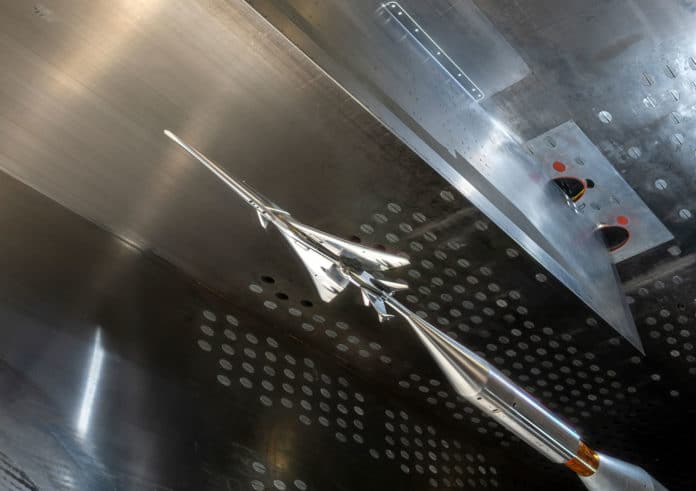NASA continues to work on the X-59, a new experimental supersonic aircraft that seeks to reduce the sonic boom. It hopes the ban on commercial supersonic flight over land can be lifted by replacing the loud sonic boom with a softer sonic “thump.” Through the unique design of the X-59 Quiet SuperSonic Technology (QueSST) airplane, NASA aims to reduce the sonic boom to make it much quieter.
Engineers recently used a small-scale model of the X-59 in NASA Glenn’s 8- by 6-foot Supersonic Wind Tunnel to visualize the agency’s boom-reducing technology and validate its boom-predicting capabilities.
The X-59 small-scale model was subjected to a week of testing in the tunnel, producing shock waves that were captured by special cameras mounted outside the test section and by a unique sensor array inside. The sensor provides a detailed measurement of the strength of the shocks. The results of the shock wave measurement were a match, in both position and strength, to those from earlier computer models for quieter supersonic flight.
Schlieren imagery from the cameras and pressure measurement are both critical to NASA’s ability to compare wind tunnel data with computer modeling. These capabilities improve the team’s capacity to understand and predict actual sonic thumps during future X-59 flights. NASA has also developed schlieren imaging capabilities for the flight that will also be used during upcoming flight campaigns.
“With the X-59, we want to demonstrate that we can reduce the annoying sonic booms to something much quieter, referred to as ‘sonic thumps,'” said John Wolter, lead researcher on the X-59 sonic boom wind tunnel test. “The goal is to provide noise and community response data to regulators, which could result in new rules for overland supersonic flight. The test proved that we don’t just have quieter aircraft design, but that we also have the accurate tools needed to predict the noise of future aircraft.”
The full-scale X-59 QueSST is currently being constructed by NASA and Lockheed Martin at the Skunkworks facility in California. The X-59 aircrafts are expected to begin its initial tests to prove airworthiness in late 2022. Following flight testing, NASA will then verify that the aircraft’s quiet supersonic technology performs in flight as designed before transitioning to the community overflight phase.
